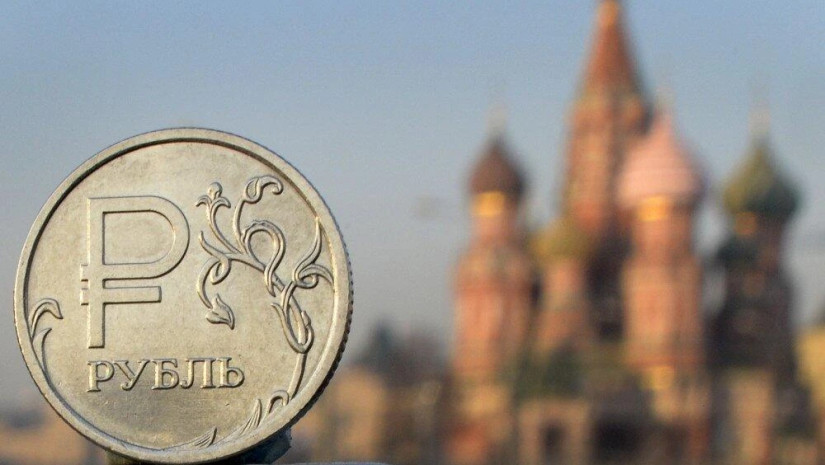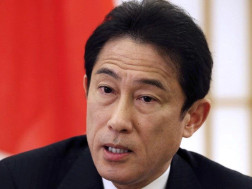Since the beginning of the year, Russia's currency, the ruble, has lost 16% of its value against the dollar and 13% against the euro. This week, it was trading at around 83 rubles to the former and 91 against the latter. This makes it the third-worst performing global currency so far this year, behind the Egyptian pound and the Argentine peso.
Following the invasion of Ukraine in February 2022, the currency immediately fell to 113 rubles against the dollar. But Russia's central bank and finance ministry pumped money into the market and managed to bring it back up to 50 rubles per dollar in July. Then, late last year, the West imposed a price cap on Russian oil. The world's second-largest oil exporter after Saudi Arabia has seen its currency slip ever since. So, what happens next?
Why did this happen?
The ruble's downturn in recent weeks has been due by higher imports and heightened foreign capital outflows, Russian officials say. Some observers agree that this is indeed part of the reason, as Russian tax revenues in January fell by 35% alone.
The end of the Russian tax year will reverse this, those observers say. That's when big exporters trade foreign currency for rubles to meet payment obligations to the state budget. The ruble should return to the 75-80 range against the dollar once exporters begin to prepare tax payments, Banki.ru chief analyst Bogdan Zvarich said.
But Albrecht Rothacher, an author who worked for 30 years in the European Commission, says the crucial factor is that Urals crude only fetched $49 (€46) per barrel in January.
What role is energy playing?
Russia's budget for 2023 is based on an average annual oil price of $70 per barrel. The EU's $60-per-barrel price cap is costing the Kremlin over $170 million a day, said the Center for Research on Energy and Clean Air, a Finnish think tank. This week, brent crude oil was trading around $85.
Another factor is President Vladimir Putin's approval of a deal that allows British energy giant Shell to sell its stake in the Sakhalin-2 oil pipeline project in Russia's Far East. The arrangement allows Shell to transfer 94 billion rubles ($1.2 billion, €1.1 billion) in proceeds from its pipeline project sale abroad. Novatek, Russia's second-largest natural gas producer, is set to acquire the stake.
Several foreign companies have pulled out of Russia since Moscow invaded Ukraine last year. Bloomberg Economics estimates that foreign companies leaving Russia last year sold assets worth between $15 billion and $20 billion.
"The reasons behind the currency fall are the shrinking oil and gas exports and likely further withdrawal of capital by Russian resident companies, as well as foreign investors," Elina Ribakova, from the PIIE thinktank, told DW.
Another factor is liquidity in dollar-ruble trades, says Eric Hontz of CIPE — a think tank affiliated with the US Chamber of Commerce. The daily trade between the currencies is only about $1 billion per day, down from more than $3 billion a day before the war.
"Judging by the low liquidity of the currency market, but also the lack of transparency in approving these kinds of deals, all of this will lead to increased volatility against the dollar and euro," economist Gregory Bazhenov wrote on Telegram.
Then there is the growing import costs of Western high tech via third countries like Turkey, Kazakhstan, China and Serbia, Rothacher believes.
Are sanctions having a stronger effect?
"The sanctions are having a stronger effect, particularly the EU embargo on purchases of Russian oil and oil products," Ribakova said.
But others say the ruble weakness is not the immediate effect of Western sanctions. Rather, they say, its a sign of the longer-term damage the costly war is doing to the Russian economy. That includes its growing dependency on China.
"China uses Russia as a new raw material colony upon which it can force discount prices onto a captive supplier, which wastes [Russia's] dwindling assets unproductively on an unwinnable war of attrition," Rothacher told DW.
"Sanctions are working, although their impact will continue to be eroded as trade patterns shift and loopholes are developed and exploited," Hontz added. "They do, however, have an additional chilling effect in what has been a very turbulent period in finance over the last several months."
What role is the Chinese yuan playing?
In January, Russia started selling its growing reserves of the Chinese currency, the yuan, to fill a budget deficit caused by falling oil and gas revenues and the costs of war. Russia had a budget deficit of a 3.3 trillion rubles, or about 2.3% of GDP, in 2022.
"There has been a substantial move towards use of yuan, which now accounts for over 30% of transactions on the local FX market (from less than 1% before the full-fledged invasion of Ukraine in Feb 2022), but the yuan is not a fully convertible currency and its instruments are not as liquid as the dollar and euro, so the transition to the yuan is still slow," said Ribakova.
"For the time being, G7 currencies dominate international trade," agreed Hontz.
What happens next?
"It is highly likely that the ruble's downward trend from mid-January is over," Alor Broker's Alexei Antonov told DW. "We expect a gradual strengthening of the Russian currency."
But many believe the Russian government favors a gradual weakening of the ruble, as it would increase budget revenues without causing inflation.
"The ruble is being managed weaker by the Russian authorities in response to the oil price cap and its impact in reducing both export and fiscal receipts. Weakening the ruble helps buoy the ruble value of oil receipts in the budget, so moderating the growth in the deficit," analyst Tim Ash told DW.
"The ruble may well continue to decline — in the absence of interventions — with the prospect of reaching the range of 84.5-86.5 rubles per dollar in the next few weeks," Chief Economist at Russ Invest, Harutyunyan Alexander, said.
Others are more upbeat.
"We believe that the dramatic strengthening of the dollar against the ruble is coming to an end," head of investment consulting Alor Broker, Aleskey Antonov, told DW.
"Catastrophic forecasts, fortunately, were not sent and we are seeing a small movement in the opposite direction. We predict that the ruble will consolidate in the region of 83–78 rubles in the coming months against the dollar and 95-88 to the euro, respectively," Antonov said.
"Perhaps by the fall of this year we will see oil above $100, against the background of production cuts and further escalation of the conflict on the perimeter of the borders of the OPEC countries and the arrival of storm seasons in the US," he added, DW reports.
















